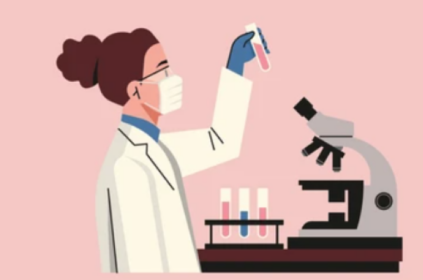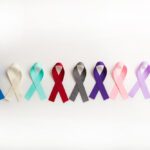If you looked at overall gallbladder cancer rates from 2001 through 2020, you’d probably think rates were decreasing. And in many groups, they are. However, gallbladder cancer rates continue to rise in Black individuals. Dr. Yazan Abboud, MD, shared more insights during Digestive Disease Week, an annual meeting for professionals in the fields of gastroenterology, hepatology, gastrointestinal surgery, and GI endoscopy.
Randy Dotinga reported on Dr. Abboud’s study, which was a nationwide 20-year analysis of gallbladder cancer incidence rates with cancer stage and patient race stratifications. He began by evaluating data from 76,873 individuals with gallbladder cancer. Findings from the study showed that:
- Early-stage gallbladder cancer rates decreased for people of Hispanic background but remained stable for other groups. In regional stages, rates decreased only in white individuals.
- Late-stage tumor incidences decreased in Hispanic individuals, remained stable in white individuals, but increased in Black individuals. Black individuals saw a 1.03% increase in gallbladder cancer rates each year broadly, with a 2.7% increase specifically in late-stage gallbladder cancer.
- 41.3% of gallbladder cancer was diagnosed in later stages. This included 40.8% of white individuals, 41.1% of Hispanic individuals, and 43.7% of Black individuals.
Why is this increase occurring? More research is needed to identify risk factors and potential environmental or lifestyle causes. For example, some physicians believe that diet, physical activity, and obesity may play a role.
Additionally, it’s important to note that Black individuals may face access barriers when it comes to care. Black individuals face racial discrimination in the clinical setting, don’t have as much access to certain resources like cholecystectomies, and are often excluded from clinical studies. Dr. Linda L. Wong, MD also shared that both Black and Hispanic individuals were less likely to undergo curative surgery for their cancer, highlighting an urgent need for increased awareness and better care.
About Gallbladder Cancer
Gallbladder cancer forms, as you might guess, in the gallbladder, a small pear-shaped organ that stores bile. An estimated 5,000-6,000 people are diagnosed with gallbladder cancer in the United States annually. This cancer is twice as common in women, and also occurs more frequently in older individuals. If you have chronic gallstones or chronic gallbladder issues, your risk of this cancer also increased.
It is important to detect and treat gallbladder cancer early. When the cancer is localized, the 5-year survival rate sits at around 69%. By the time the cancer has spread, the survival rate drops significantly. The challenge is that gallbladder cancer often shows no symptoms in early stages. When symptoms do appear, these can include:
- Bloating
- Nausea and vomiting
- Upper right abdominal pain
- Fever
- Itchy skin
- Abdominal lumps
- Losing weight without trying
- Jaundice (yellowing of the skin, eyes, and mucous membranes)
Treatment options include chemotherapy, radiation, immunotherapy, targeted therapy, and surgery. If you have gallbladder cancer, ask your doctor which treatment option is right for you.
Editor’s Note: Get Involved
Cancer doesn’t discriminate. WHATNEXT and its partners are interested in amplifying the voices of those from all identities and backgrounds. If you have a cancer journey to share, reach out here to learn more about how your voice can help spread awareness and inspire individuals from all walks of life.
cancer awareness gallbladder gallbladder cancer health equity oncology rare cancer
Last modified: July 17, 2024











